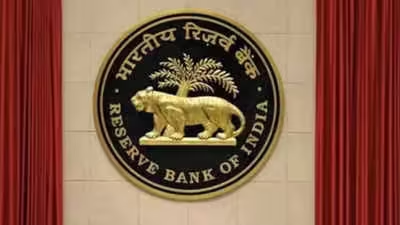Impact of RBI Gold Loan Regulations on India’s Gold Loan Industry
In recent years, the Reserve Bank of India (RBI) has intensified its oversight of India’s gold loan industry, introducing stricter regulations that affect how non-banking financial companies (NBFCs) conduct gold loan operations. These measures aim to bring transparency and stability to this essential segment of India’s lending market, which has seen a rapid increase in demand from individuals, households, and small businesses.
Why the RBI Is Strictly Regulating Gold Loans in India
The gold loan sector has experienced exponential growth, with NBFCs providing easy access to credit for millions of Indians. However, RBI inspections revealed that some NBFCs were not fully compliant with industry standards, raising concerns about loan-to-value (LTV) ratios, gold purity assessments, and excessive cash handling. These regulatory gaps prompted the RBI gold loan regulations to impose new rules to ensure fair practices, accurate appraisals, and risk mitigation.
Key Areas of RBI Gold Loan Regulations for NBFCs
- Loan-to-Value (LTV) Ratios: The RBI has set firm LTV ratios to maintain loan security against the market value of gold, safeguarding both customers and lenders against market volatility.
- Transparency in Fees: New standards require NBFCs to be more transparent about interest rates and fees, allowing customers to understand costs associated with their loans.
- Gold Purity and Valuation: The RBI now demands standardized gold appraisal processes to prevent discrepancies in the purity and weight of gold pledged by customers.
- Digital and Cashless Transactions: To align with the country’s digitalization goals, the RBI encourages NBFCs to minimize cash transactions, promoting secure and traceable digital payments.
Compliance and Operational Changes for NBFCs
To meet RBI’s requirements, NBFCs have had to invest in improved verification systems, staff training, and digital transaction tools. Moving toward digital payments also reduces the risk of fraud, which benefits the customer experience and enhances compliance. Many NBFCs now focus on streamlining loan approvals, simplifying customer onboarding, and increasing transparency in repayment options to meet new RBI standards.
Moving Towards Cashless Gold Loan Transactions
The RBI is promoting a digital-first approach to loan disbursements, which has reshaped the industry’s payment ecosystem. NBFCs are now shifting to cashless payments, using UPI, mobile banking, and other digital platforms to process gold loan transactions. RBI gold loan regulations is an effort to improve transparency, reduce cash handling, and align with the government’s “Digital India” initiative.
Digitalization not only provides a smoother customer experience but also makes gold loans more accessible and secure for individuals in rural and urban areas alike. Many NBFCs have introduced educational programs to help customers transition to digital payments, empowering them with knowledge about secure, cashless transactions.
Benefits for Consumers in the Gold Loan Sector
For customers, RBI Gold loan Regulations emphasis on transparency and fair practices offers several advantages. Improved LTV ratios and accurate gold assessments mean that customers receive a fair valuation for their gold, maximizing the loan amount they can secure. Digital and cashless transactions also ensure that payments and disbursements are safe and reliable. Furthermore, with standardized fees, customers can better understand and manage the costs associated with their loans, building confidence in the gold loan system.
Impact on India’s Gold Loan Market and NBFC Growth
The RBI’s actions have created both challenges and opportunities for India’s gold loan industry. Although NBFCs face the immediate challenge of adapting to more stringent regulations, those that implement these changes stand to benefit in the long term. Companies that prioritize compliance, transparency, and digitalization will likely see increased customer loyalty, better operational efficiency, and stronger growth prospects.
This focus on regulatory adherence aligns with the broader push for a stable and resilient lending ecosystem in India. By setting consistent standards across the sector, the RBI helps protect consumers from unfair practices and creates a more competitive and trustworthy marketplace for gold loans.
Future Prospects for India’s Gold Loan Industry
With the ongoing demand for quick access to finance, the gold loan sector remains vital to India’s economy. The RBI’s emphasis on digital and cashless transactions is expected to further modernize the industry, making it more accessible and appealing to a digitally-savvy customer base. NBFCs that embrace these changes will likely lead the market, leveraging digital channels to reach a wider customer audience and offer improved loan services.
In the coming years, the impact of RBI Gold Loan regulations will likely contribute to the sector’s resilience, promoting growth and innovation across India’s gold loan industry.
IIFL Finance Gold Loan Portfolio increased by 2000 Crore After RBI Ban Lift






